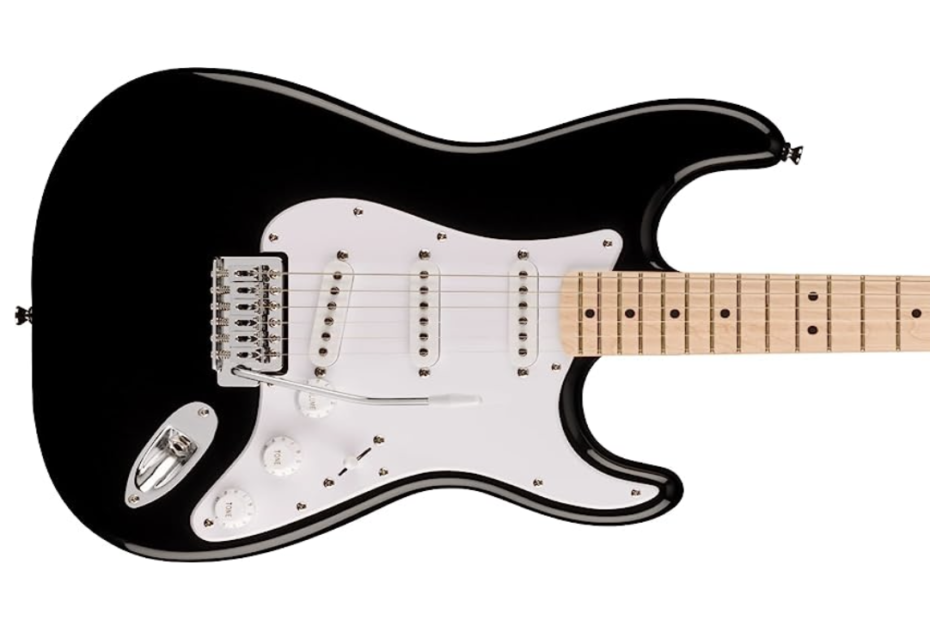Blues is a very important style that has influenced music as distinct rock and jazz. In this article you’ll learn about blues guitar chords.
If you want to learn to play the guitar even better, your should get familiar with the blues. The following tips will help you direct your learning and practice of blues chords.
1. Beginning Your Journey With Blues
 Beginner guitar players are frequently given blues pieces by their instructors. This is an standard practice, because the blues is a great place to start developing your skills, if you desired to improve your guitar playing.
Beginner guitar players are frequently given blues pieces by their instructors. This is an standard practice, because the blues is a great place to start developing your skills, if you desired to improve your guitar playing.
It is important to have some idea of how to learn blues guitar. The standard blues guitar lessons involve learning a few common blues tunes. They’re usually in the A key with some variations and alternations.
2. Chords You Need to Learn
Learning melody and harmony lessons precede the blues rhythm. There are three primary chords frequently played in most blues songs: the 1st, 4th, and 5th, resulting in a standard progression from a major scale. However, there are several variations here.
You need to learn these chord sequences in different keys. For example, in the key of A the triads are A, D, and E. For the key of B, it would be B, E, and F#.
Hot Tip: Use Guitar Songs To Improve Your Guitar Playing.
3. Adding Barre Chords
Assuming you have some background on guitar tablature notation and know the basic guitar chords, you can start practicing these blues guitar chords. This can be extended to practicing the blues movable barre chords.
Learning barre chords may seem difficult at first, but it is very simple after practice. When the first finger of the left hand presses all six strings across the fingerboard, the finger acts as a bar. Using this strategy, you can move several of the open chords across the fingerboard.
Also read:
4. Start Daily Practice of Blues Chords
 A lot of the effort in learning something has to do with constant practice. It has been said that it takes 1000 hours of deliberate work to achieve mastery. It is not different with Blues guitar.
A lot of the effort in learning something has to do with constant practice. It has been said that it takes 1000 hours of deliberate work to achieve mastery. It is not different with Blues guitar.
Learn your blues guitar chords and practice them all the time. Eventually you’ll make your way to that desired Blues Jam with your guitar. You will find a venue to show off your talent, but this all begins with the blues guitar chords. The magical blues guitar sound will come later.
Also read: How to play blues guitar in 3 steps
5. Using Blues Improvisation
Learning the blues guitar chords effectively also includes a knowledge of the blues scales, note runs, major third notes, and other important fundamentals. Understanding the entire process of this guitar stile will equip the blues guitar player with the desired improvisation skills.
Learning to improvise over blues guitar chords can lead you to learn other genres. The same methods can be applied to rock, jazz, and even metal. Sadly, many beginners underestimate the blues as a training ground for their skills.
Everyone wants to take the easy route and start playing guitar solos. This is the not right way to go. If you want to become a good guitar player, or even an above average one, blues needs to be experienced. Blues contains most of what you need to be a successful guitar player.
Hot Tip: You can shorten your learning curve by acquiring a complete guitar course.
6. How to Play Better Blues Chords
In the end, learning blues guitar rhythm is to learn how all these elements can be combined. To simplify this process, you have to learn these chords by groups or by chord progressions. Constant practice will get you ear used to the different feelings produced by each chord.
Also read: The Blues Scale on guitar
7. Getting the Right Guitar and Equipment
 In terms of the specific guitar, if you want a better sound then you should use a guitar that is designed for the blues style. Great blues guitarists prefer guitars with bigger frets. This gives more space for their fingers, and there is less of a drag because there is minimal contact with the fingerboard.
In terms of the specific guitar, if you want a better sound then you should use a guitar that is designed for the blues style. Great blues guitarists prefer guitars with bigger frets. This gives more space for their fingers, and there is less of a drag because there is minimal contact with the fingerboard.
When it comes to practice with slides, wear the slide on the finger you are most comfortable with. However, try to practice wearing the slide on the other fingers too. If you are using a slide guitar, practice without using a pick at first. It may be awkward initially, but you will soon get used to it.
The 6 Best Guitars to Play Blues
There are several guitars that are well-suited for playing blues, each with its own unique characteristics and tonal qualities. Here are some of the best guitars commonly used in blues music:
- Fender Stratocaster: The Stratocaster is a versatile guitar known for its smooth playability, twangy tones, and excellent sustain. Its three single-coil pickups deliver a wide range of tones suitable for both clean and overdriven blues sounds. The Stratocaster’s comfortable contoured body and responsive tremolo system make it a popular choice among blues players.
- Gibson Les Paul: The Les Paul is a classic guitar renowned for its thick, warm tone and sustain. Equipped with humbucker pickups, it offers a powerful, fat sound with rich midrange and creamy overdrive. The Les Paul’s solid mahogany body and set neck contribute to its excellent resonance and sustain, making it a favorite among blues guitarists.
- Gibson ES-335: The ES-335 is a semi-hollowbody guitar that combines the warmth and resonance of an acoustic guitar with the versatility and sustain of an electric guitar. Its dual humbucker pickups deliver a wide range of tones, from smooth jazz-infused blues to gritty and biting overdriven sounds. The ES-335’s hollowbody construction adds depth and character to the tone, making it a popular choice for blues players.
- Fender Telecaster: The Telecaster is known for its distinctive twang and bright, snappy tone. Its single-coil pickups provide clarity and articulation, making it ideal for both rhythm and lead playing in blues music. The Telecaster’s simplicity and straightforward design contribute to its timeless appeal and versatility across various musical genres, including blues.
- Gibson SG: The SG is a lightweight and fast-playing guitar with a rich and resonant tone. Equipped with humbucker pickups, it offers a wide range of blues tones, from warm and smooth to biting and aggressive. The SG’s slim neck profile and double-cutaway body design allow for easy access to higher frets, making it well-suited for expressive blues soloing.
- Gretsch Electromatic Series: Gretsch guitars, particularly those in the Electromatic series, offer a unique blend of vintage style and modern playability. With their semi-hollow or hollowbody designs, Filter’Tron pickups, and Bigsby vibrato systems, they produce warm, twangy tones that are perfect for blues, jazz, and rockabilly styles.
8. Freeing Your Blues Sound
When you have practiced all this and mastered the blues guitar chords, you will eventually develop dexterity and your own style. You will be able to play the different blues guitar chords in different ways, and create a sound that is completely yours. Reaching this point this will make you very happy for all the work you invested!
Learn Blues Guitar Now
 If you want to learn more about blues guitar, I have prepared an Easy Blues Guitar Mastering Guide that you can use to improve your blues skills, following the learning method that I discuss above.
If you want to learn more about blues guitar, I have prepared an Easy Blues Guitar Mastering Guide that you can use to improve your blues skills, following the learning method that I discuss above.
You can use this guide to practice all the skills you need to improve your blues guitar. This guide also includes exercises, and everything you need to improve your guitar playing in general.
BONUS: Buy this product today, and receive as bonus an introductory course to the guitar, including simple chords, harmony, solo, and music notation.
BUY NOW FOR ONLY $5 (80% OFF SALE)

